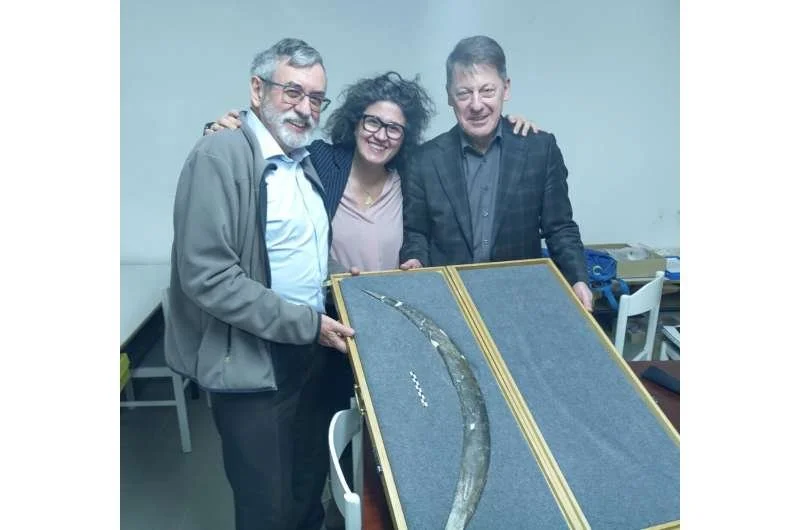Published May 14, 2025 – 10:11
During road reconstruction work in Taiyuan, the capital of Shanxi Province in China, archaeologists uncovered a small tomb dating back to the Tang Dynasty. Although the excavation remained under wraps for years, the recent announcement of the findings reveals a story that extends far beyond the borders of ancient China.
The tomb, built of bricks and adorned inside with colorful murals, belonged to a man who died in 736 AD at the age of 63 and was buried alongside his wife. The murals depict everyday scenes: women grinding flour, men making noodles, processing rice, carrying water, and holding ritual vessels. These images follow the artistic style known as “figures under trees,” a popular motif of the time emphasizing scenes set beneath painted trees.
Shanxi Provincial Institute of Archaeology
The artistic approach—characterized by vivid portrayals, simple coloring, and flat, two-dimensional forms—bears a striking resemblance to the murals in the tomb of Wang Shenzi, a prominent figure from the late Tang Dynasty. This similarity suggests the same painter may have worked on both tombs.
The Surprise on the Wall: A Blonde Bearded Man
Among all these Han Chinese figures, one stands out: a man with blonde hair and a beard leading camels. This unusual image caught experts’ attention because it depicts someone with physical traits unlike those historians expect in China at that period. Professor Victor Xiong of Western Michigan University suggests this is likely a Sogdian—a member of a Central Asian people from the region of today’s Uzbekistan and Tajikistan—known for their active role in Silk Road trade.
Shanxi Provincial Institute of Archaeology
Xiong explained, “Based on his facial features and style of clothing, we can identify him as a ‘westerner’—most probably a Sogdian from Central Asia.”
Familiar Faces, Unfamiliar Details
Most of the people shown in the tomb appear to be the same two individuals—likely the man and woman buried there. Archaeologists believe the scenes illustrate moments from their daily lives, offering rare insights into the occupations, clothing, and rituals of the time.
Other scenes include a woman leading four horses, an elderly man holding an axe and a cup, and guards dressed in yellow robes with swords standing at the tomb’s gates. The vaulted ceiling features a dragon-like symbol, contrasting with the rest of the tomb’s imagery.
Shanxi Provincial Institute of Archaeology
The Significance of a “Foreign” Presence
The presence of this “foreigner” in the tomb is more than a rare artistic inclusion. It stands as a testament to the vibrant cross-cultural interactions already flourishing in the 8th century, facilitated by trade routes linking East and West. The Silk Road was not just a channel for goods but a conduit for people, ideas, and cultures—a fact vividly illustrated by this humble tomb deep in China.










